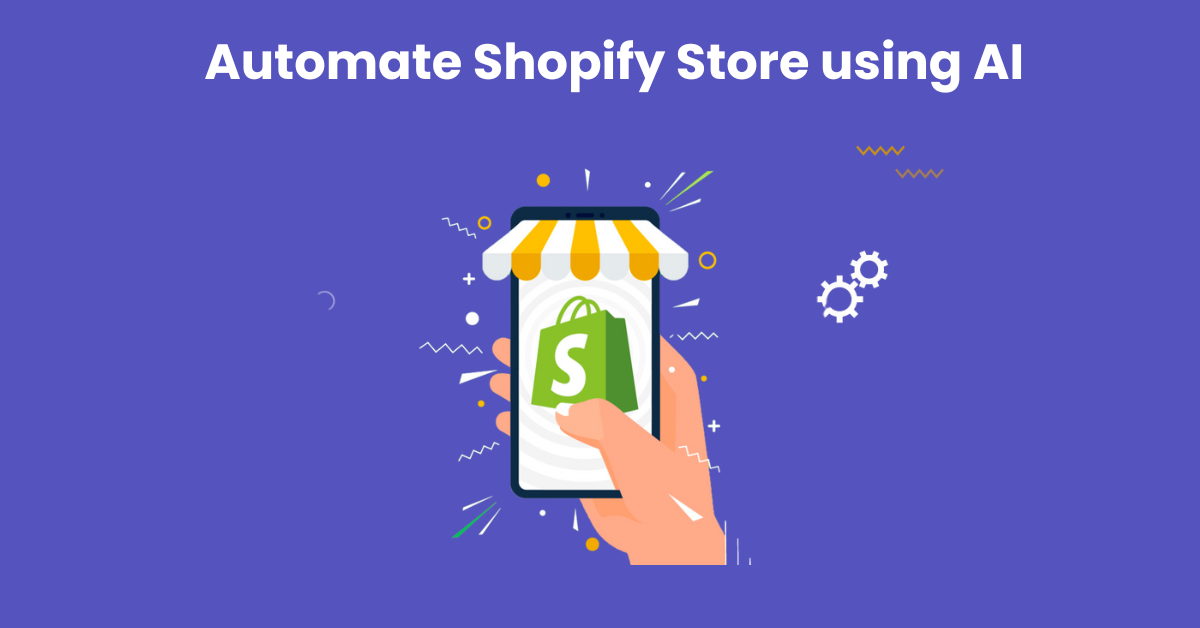From Zero to Passive Income: How to Build a Shopify Store That Works While You Don’t!
In today’s digital age, the dream of earning passive income is more achievable than ever. Many people aspire to break free from the traditional 9-to-5 job and create a lifestyle where their money works for them. One of the most effective ways to achieve this is by building a Shopify store. In this blog post, we’ll explore how to create a successful Shopify store from scratch that generates passive income while you focus on other aspects of your life.

Why Choose Shopify for Your Passive Income Venture?
Shopify is a powerful e-commerce platform that simplifies the process of setting up an online store. Here are some reasons why it’s an excellent choice for anyone looking to create a source of passive income:
- User-Friendly Interface: Shopify is designed to be intuitive and easy to use, making it accessible for beginners with no technical expertise.
- Customizable Templates: The platform offers a wide range of professionally designed themes that can be easily customized to reflect your brand.
- Integrated Payment Processing: Shopify seamlessly integrates with various payment gateways, allowing you to accept payments from customers worldwide.
- 24/7 Support: With round-the-clock customer support, you can get help whenever you encounter challenges.
- Scalability: Shopify can grow with your business. Whether you start small or have big ambitions, the platform can accommodate your needs as your store expands.
Identify Your Niche

Before diving into the technical aspects of building your Shopify store, the first step is to identify your niche. A niche is a specific market segment that you want to target. Choosing the right niche is critical for your store’s success. Here’s how to identify your niche:
- Passion and Interests: Consider what you are passionate about or have knowledge of. This will make it easier for you to create content, connect with customers, and market your products.
- Market Research: Use tools like Google Trends, Ubersuggest, or SEMrush to research potential niches. Look for keywords with high search volume and low competition.
- Profitability: Evaluate the profitability of your chosen niche. Consider product sourcing, pricing, and shipping costs to ensure you can achieve a healthy profit margin.
Conduct Competitive Research
Once you’ve identified your niche, it’s essential to conduct competitive research. Understanding what your competitors are doing well and where they fall short can help you refine your business strategy. Here’s how to analyze your competitors:
- Identify Key Players: Use tools like SimilarWeb or Ahrefs to find top competitors in your niche. Analyze their websites, product offerings, and marketing strategies.
- Strengths and Weaknesses: Take note of what competitors do well and where they struggle. Identify gaps in the market that you can fill with your offerings.
- Learn from Their Marketing: Observe how competitors market their products. Look at their social media presence, content marketing efforts, and advertising strategies for inspiration.
Set Up Your Shopify Store

With your niche and competitors in mind, it’s time to set up your Shopify store. Here’s a step-by-step guide to get you started:
- Sign Up for Shopify: Go to the Shopify website and sign up for a free trial. You’ll need to provide your email address and create a password.
- Choose a Domain Name: Select a domain name that reflects your brand and is easy to remember. You can purchase a domain through Shopify or connect an existing one.
- Select a Theme: Browse Shopify’s theme store and choose a template that suits your brand’s aesthetics. Customize the theme to match your branding elements, such as colors, fonts, and logos.
- Add Products: Click on “Products” in your Shopify dashboard and start adding products. Include high-quality images, detailed descriptions, and pricing information. Be sure to optimize product titles and descriptions for SEO.
- Configure Payment Gateways: Set up payment gateways to accept payments from customers. Shopify supports various payment methods, including credit cards, PayPal, and Apple Pay.
- Set Up Shipping Options: Configure your shipping settings, including shipping rates and delivery methods. You can choose to offer free shipping, flat-rate shipping, or calculated shipping based on the customer’s location.
- Launch Your Store: After setting everything up, it’s time to launch your store! Test all features to ensure everything works smoothly before going live.
Develop a Marketing Strategy
Once your store is live, you need a marketing strategy to drive traffic and sales. Here are some effective tactics to consider:
- Search Engine Optimization (SEO): Optimize your store for search engines by incorporating relevant keywords into your product descriptions, titles, and meta tags. Tools like Yoast SEO or Moz can help you analyze your SEO performance.
- Content Marketing: Create valuable content related to your niche, such as blog posts, how-to guides, and videos. This not only improves SEO but also establishes your brand as an authority in your industry.
- Social Media Marketing: Utilize social media platforms to promote your products and engage with your audience. Create visually appealing posts and run targeted ads to reach potential customers.
- Email Marketing: Build an email list and send regular newsletters to your subscribers. Use email marketing platforms like Mailchimp or Klaviyo to automate your campaigns and track performance.
- Influencer Marketing: Collaborate with influencers in your niche to promote your products. Influencers can help you reach a larger audience and build trust with potential customers.
Automate Your Store Operations

To create a source of passive income, you need to automate your store’s operations as much as possible. Here are some strategies to achieve this:
- Use E-commerce Automation Tools: Invest in e-commerce automation tools that streamline your processes. Tools like Oberlo can help you find and import products directly into your store, while apps like Orderhive can manage inventory and orders.
- Implement Abandoned Cart Recovery: Use Shopify’s abandoned cart recovery feature to automatically send reminders to customers who leave items in their cart. This can help recover lost sales.
- Optimize Customer Support: Consider using chatbots or automated responses for customer inquiries. This ensures customers receive prompt assistance, even when you’re not available.
- Regularly Analyze Data: Use Shopify Analytics and Google Analytics to regularly analyze your store’s performance. Use this data to adjust your marketing strategies, optimize product listings, and improve the overall customer experience.
Scale Your Business for Increased Passive Income
Once your store is generating consistent income, it’s time to scale your business. Here are some tips for effective scaling:
- Expand Your Product Range: Consider adding new products based on customer feedback and market trends. Diversifying your offerings can help attract new customers and increase sales.
- Explore New Sales Channels: Consider selling on additional platforms like Amazon, eBay, or social media marketplaces to reach a broader audience.
- Invest in Paid Advertising: Use paid advertising, such as Google Ads or Facebook Ads, to drive targeted traffic to your store. Monitor your return on investment (ROI) to ensure your ad spend is effective.
- Enhance Your Brand Identity: Focus on building your brand through storytelling, consistent messaging, and exceptional customer service. A strong brand can lead to customer loyalty and repeat purchases.
- Network with Other Entrepreneurs: Join online communities, forums, or local meetups to connect with other entrepreneurs. Networking can provide valuable insights and potential collaboration opportunities.
Monitor, Optimize, and Evolve

Creating a successful Shopify store that generates passive income is an ongoing process. Regularly monitor your store’s performance and be willing to adapt and evolve your strategies. Here are some ways to keep your business thriving:
- Solicit Customer Feedback: Regularly ask your customers for feedback on their shopping experience. Use surveys or feedback forms to gather insights on what’s working and what needs improvement.
- Stay Informed on Industry Trends: Keep an eye on emerging trends in your niche and the e-commerce industry as a whole. Adapt your product offerings and marketing strategies accordingly to stay relevant.
- Experiment with New Strategies: Don’t be afraid to try new marketing techniques or product offerings. A/B testing different approaches can help you determine what resonates best with your audience.
- Invest in Learning: The e-commerce landscape is constantly evolving. Consider taking courses, attending webinars, or reading industry blogs to stay updated on best practices and new strategies.
Conclusion

Building a Shopify store that generates passive income is not just a dream; it’s an attainable goal. By identifying your niche, setting up your store, creating a robust marketing strategy, and automating your operations, you can create a source of income that allows you to focus on what truly matters in your life. Remember that success doesn’t happen overnight—be patient, stay committed, and watch your business grow while you enjoy your newfound freedom!
